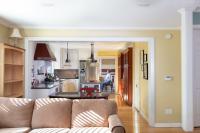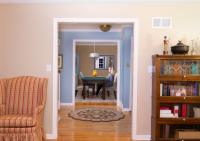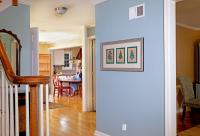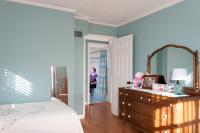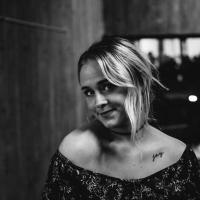Introduce yourself and describe your work and the media/genre you work in.
My name is Scout and I work with a camera! I have lived in Kansas City all my life and I typically make work about things like family, memory, grief, domestic space, but quite honestly amidst such a chaotic and uncertain time, these topics have felt much heavier, so I have been spending more time outside and taking up new projects - for example, right now I am trying to teach myself how to reupholster a couch!
You’ve said that your work explores the “tension-filled space in between objective and subjective.” How do you work with this tension and reflect this “space between” in your work?
When I use the word tension, I think it is only created as a response to the other: I am intrigued by what is in between tensions : meaning, these emotional responses to the seemingly objective or non-selected environment, and vice-versa, the objective approaches to subjective experience. The space in between these, the overlap, the middle section of the venn diagram is what I think about. And it can be murky! I enjoy reflecting on the things that exist in that murky in-between space; things you can look at again and again and see or understand something new each time because of what your headspace is like when you see it. On either side of that murky space is a juxtaposition. For example, when I am anxious and feel like I have a hard time catching my breath, I want a heavy pressure on my chest: a hand pushing down or a weighted blanket. This is an example of those opposites: needing the pressure to calm down even though the weight is what caused the lack of calm in the first place. Why is this? The moment before you answer is the in-between space. It is comforting because you aren’t here and you aren’t there. You haven’t started and you haven’t finished.
So as a photographer, it can be especially challenging to depict this in-between because it is so non-literal. I photograph my childhood home a lot because it to me is an architectural metaphor of the in-between space. Through my personal experience with trauma and mental health, I often would experience feelings of dissociation. When you have an emotional disconnect to the one place you are expected to feel connected to (home), it began to represent what that in-between space could feel and look like. As you see in the images from my thesis project, I used non-perspectival photography to rebuild my home as it does not truly exist. You can detect that something may seem off, but you can’t quite put a finger on what it is!
You’ve described yourself as a research-based photographer. What kind of research goes into your work or your creative process?
I adore all the preparation for the work sometimes even more than actually making it! I easily get sucked into a rabbit hole of a topic and delve as deep as I can into any literature, theories, etc. There is something incredibly fascinating to me about addressing artwork with such a methodical approach (there’s that objective vs. subjective again!) because it is my way of making sense of it. I spend countless hours in libraries just to realize again and again that art and science cannot exist without each other because as people we need them both. Any research I do for my work eventually comes back to psychology, which for me is the link between the two.
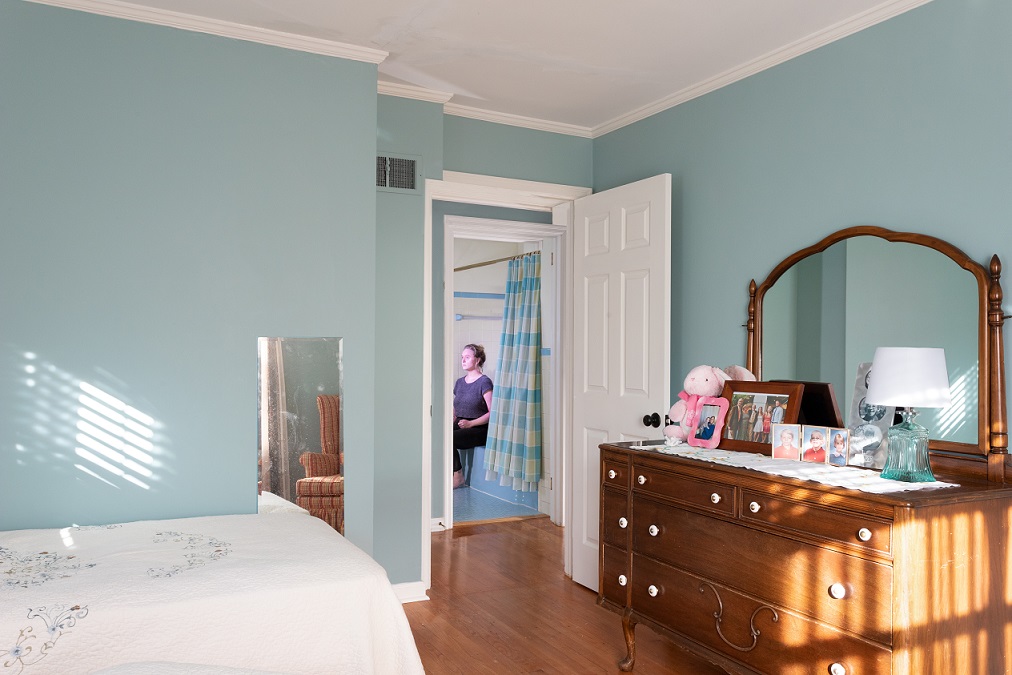
Who are your biggest artistic influences?
For me it is constantly changing as I evolve and grow. Traditionally, I love the way Caravaggio uses light and the way Vermeer manipulates perspective. Much more contemporary, I adore conceptual artist Sophie Calle, photographers Richard Whitlock and Larry Sultan, earthworks artist Nancy Holt, and animator Jacolby Satterwhite. I could list a hundred more but those are a few of my favorites!
How has living in the Kansas City area impacted your work or the way you think about art in general?
Living in the same place for a long time no matter where it is obviously shapes your definition of home, which has affected my work greatly because domestic space and family have been my main subjects. But KC specifically has a really interesting art community - it’s expanded rapidly over the last few years and I consider myself lucky to grow up during that because it’s made me aware of a lot more. We live in such a historically red-lined city and its art community is no exception. There has been great strides recently to become more diverse and inclusive, and even though we have an insane amount of work to do before it gets better, many more voices are being heard now and the art community here is doing what they can to stick together and create platforms where necessary.
You’ve just finished up your Bachelor’s degree at KCAI in May of 2020. What’s next for you in your career?
WHO KNOWS! Everything is upside down right now and entering the workforce during this insanity is not the smoothest of transitions. I am considering hiding out in grad school for a while! While I would love to be a curator or work in a community gallery, long term goals have definitely shifted recently. With the year we had, all I can ask for is safety and health, and right now, that is more than enough!
Book and magazine recommendations from the Johnson County Library catalog:
The Flavia de Luce Novel series by Alan Bradley
The Red Tent by Anita Diamant
Bluets by Maggie Nelson
All About Love by bell hooks
How We Die by Sherwin B. Nuland
The Birth of the Prison by Michel Foucalt
My Grandmother’s Hands by Resmaa Menakem
Aperture magazine (any issue!)
Uncommon Places by Stephen Shore
*

